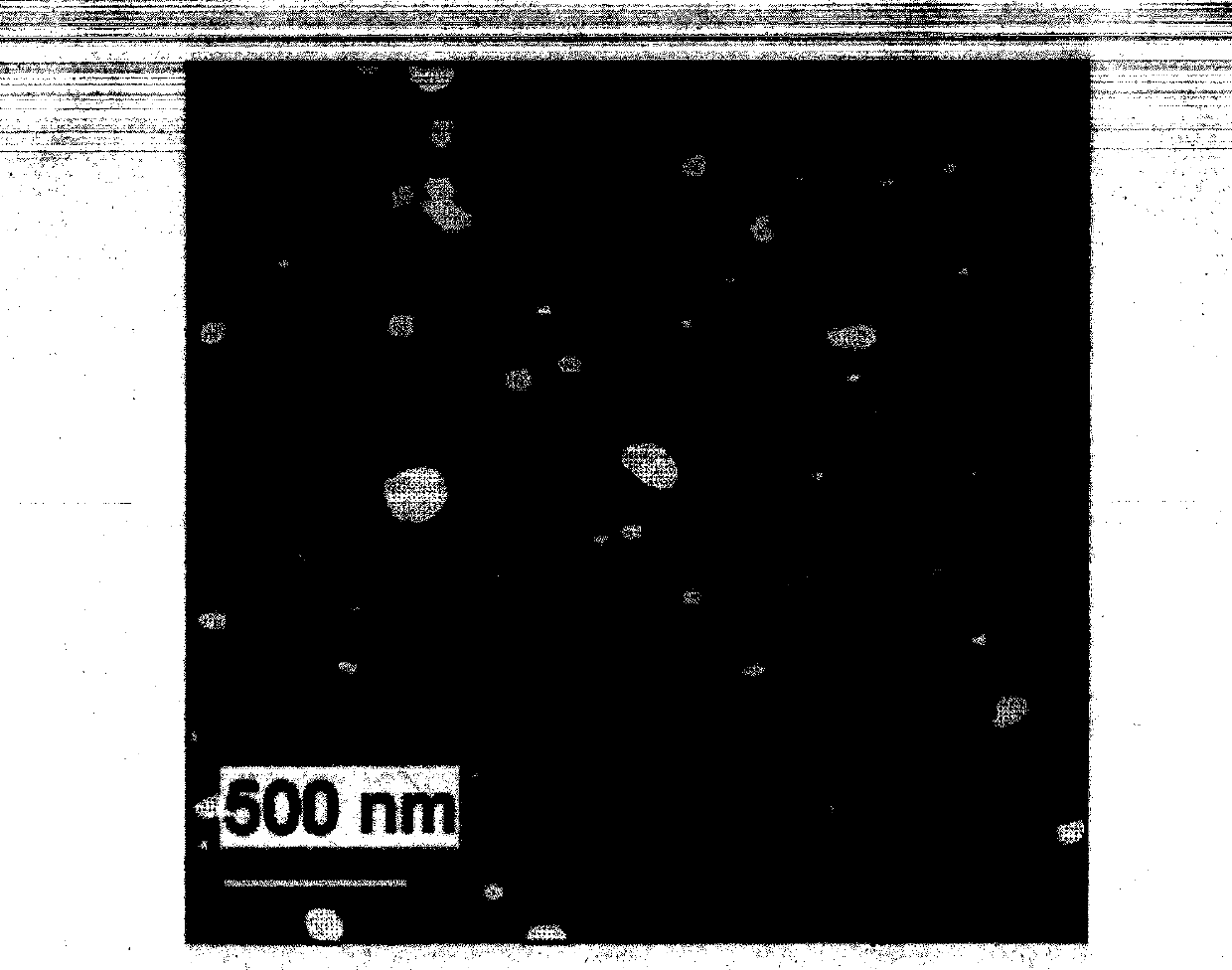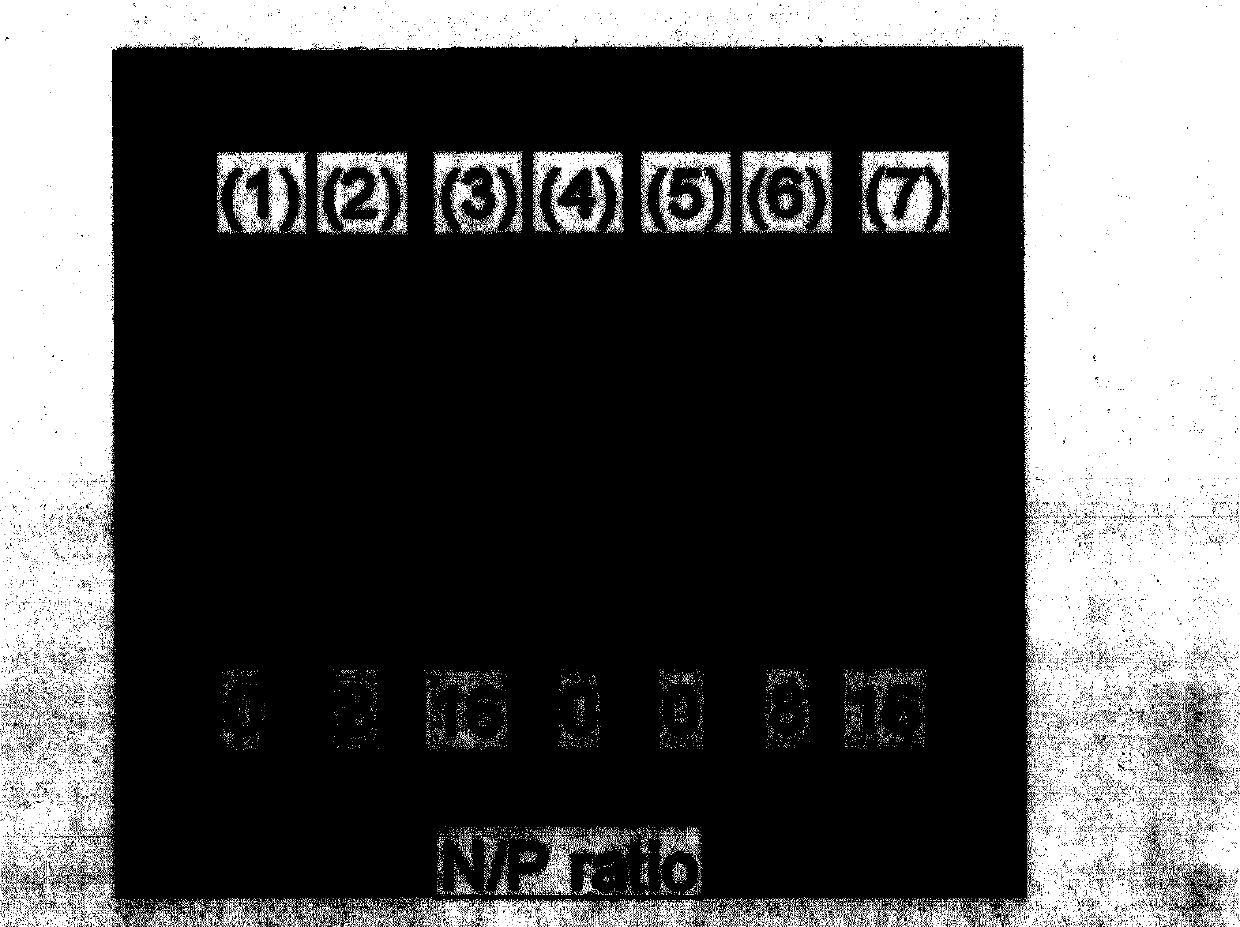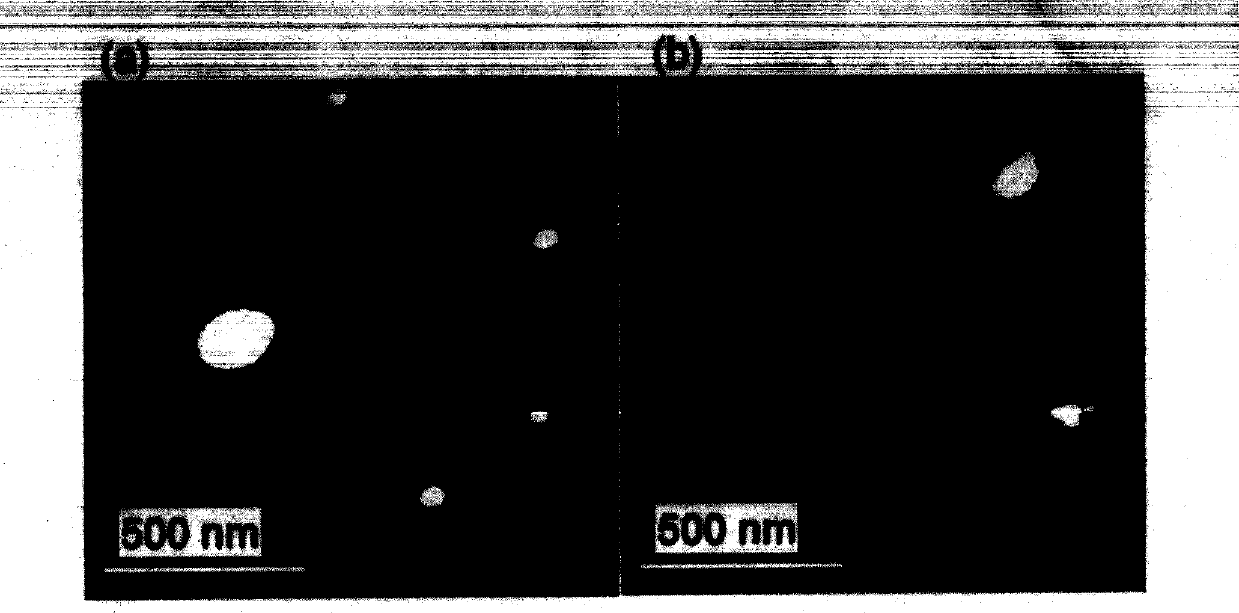Nano-particles capable of improving gene transfection efficiency and preparation method of gene transfection reagent based on particles
A technology of nanoparticle and gene transfection, which is applied in the direction of introducing foreign genetic material using vectors, recombinant DNA technology, etc., and can solve the problem of low transfection rate
- Summary
- Abstract
- Description
- Claims
- Application Information
AI Technical Summary
Problems solved by technology
Method used
Image
Examples
Embodiment 1
[0020] Example 1. Transfection experiments on H293T cells based on polyethyleneimine (PEI) mixed NONPs gene transfection reagent
[0021] (1) Preparation of polyethyleneimine (PEI) mixed NONPs gene carrier and gene transfection reagent
[0022] Select pEGFP as the reporter gene (DNA), and polyethyleneimine (PEI) as the gene transfection carrier. The atomic force results show that the structure of the PEI-DNA complex is very compact, ranging in size from tens to hundreds of nanometers such as image 3 (a); while the PEI / NONP / DNA complex is relatively loose, independent DNA strands can be seen in the atomic force microscope such as image 3 (b). The illustration shows that NONPs may slightly interfere with PEI-DNA recombination.
[0023] 0.5 μg of pEGFP DNA plasmid, 4 μL of PEI and NONPs were mixed and dissolved in phosphate-buffered saline (PBS) to make a 100 μL solution. Incubate for 30 minutes at room temperature. 1% agarose gum in TAE buffer (containing 40 ml tris, 1 ml...
Embodiment 2
[0033] Embodiment 2. Based on the transfection experiment of the gene transfection reagent of polyethyleneimine (PEI) mixed NONPs to Hela cell
[0034] (1) Preparation of polyethyleneimine (PEI) mixed NONPs gene carrier and gene transfection reagent
[0035] Except that the cultured cells were Hela cells, other raw materials and experimental procedures were the same as in Example 1.
[0036] (2) Evaluation of gene transfection efficiency
[0037] The experimental procedure is the same as in Example 1. After incubation for 48 hours, the transfection efficiency of the Hela cells was detected by flow cytometry. When the nitrogen-to-phosphorus (N / P) ratio (N / P) was 32, the transfection efficiency exceeded 50%. Under the same conditions, the transfection efficiency of the PEI system without NONPs was only 40%. It can be proved that the use of NONPs transfection reagents has increased the transfection efficiency of Hela cells by more than 25%.
[0038] (3) Cytotoxicity evaluatio...
PUM
 Login to View More
Login to View More Abstract
Description
Claims
Application Information
 Login to View More
Login to View More - R&D
- Intellectual Property
- Life Sciences
- Materials
- Tech Scout
- Unparalleled Data Quality
- Higher Quality Content
- 60% Fewer Hallucinations
Browse by: Latest US Patents, China's latest patents, Technical Efficacy Thesaurus, Application Domain, Technology Topic, Popular Technical Reports.
© 2025 PatSnap. All rights reserved.Legal|Privacy policy|Modern Slavery Act Transparency Statement|Sitemap|About US| Contact US: help@patsnap.com



